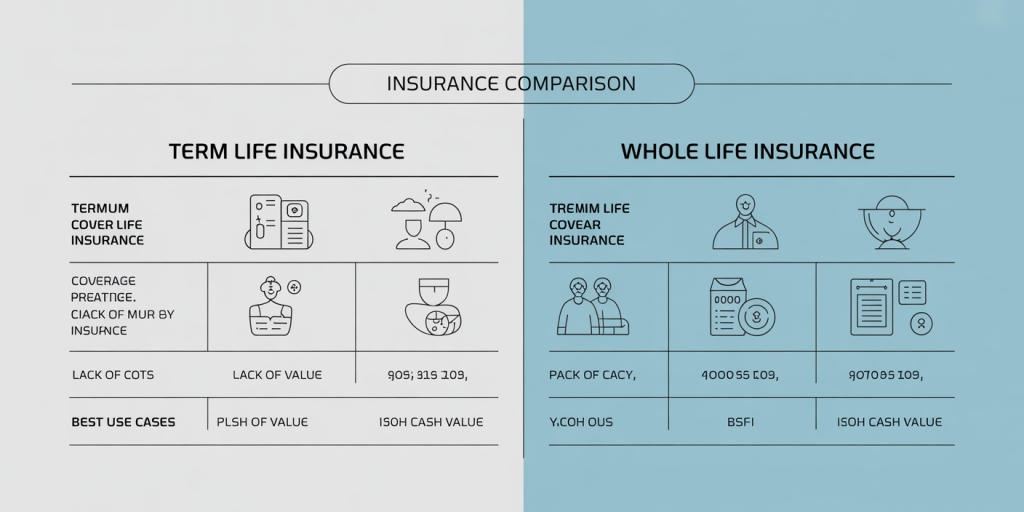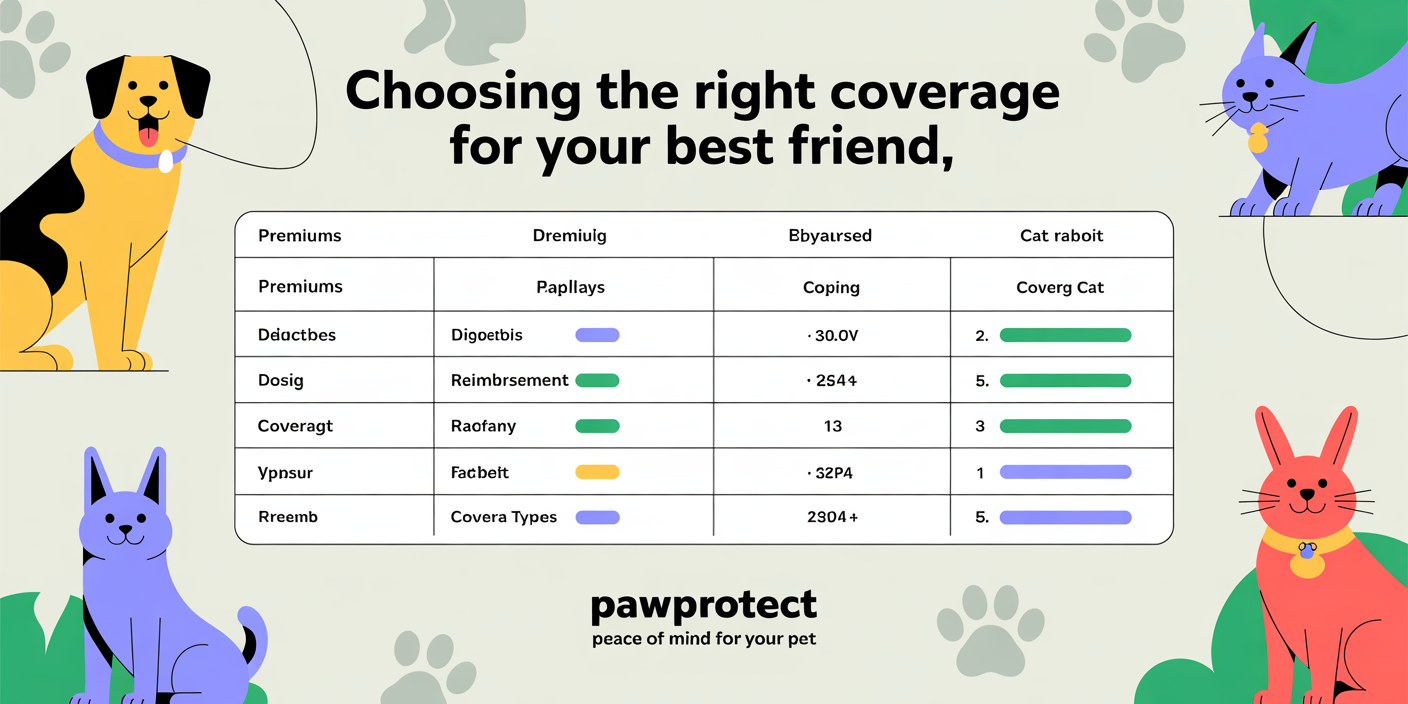Term vs. Whole Life Insurance in 2025: Which Is Really Worth It Now?
Anúncios
In today’s increasingly uncertain financial environment, life insurance remains a cornerstone of personal financial planning. The decision between term life insurance and whole life insurance is a critical one for many individuals and families looking to secure their futures. As of 2025, evolving economic conditions, changing consumer preferences, advancements in insurance products, and updated regulatory frameworks have transformed the landscape for life insurance buyers. This detailed analysis explores the key distinctions, benefits, drawbacks, and real-life implications of term versus whole life insurance policies to help consumers determine which option offers genuine value for their unique circumstances.

Illustration of a young family comparing term life insurance and whole life insurance options, showing affordability vs. wealth-building features in a modern 2025 financial planning setting.
Anúncios
The Current Life Insurance Landscape in 2025
Life insurance penetration in the United States and globally continues to grow steadily. According to the 2024 LIMRA Secure Retirement Institute report, roughly 58% of U.S. adults have some form of life insurance, totaling approximately $23 trillion in coverage. The sector is driven by increased financial awareness and a renewed focus on long-term wealth protection, partly accelerated by the uncertainties brought by recent global events like the COVID-19 pandemic and economic fluctuations. In the United States alone, term life insurance accounted for about 60% of new individual life insurance policies issued in 2024—a figure that is notably higher compared to whole life insurance purchases.
Anúncios
With rising inflation peaking at an average rate of 6.5% in 2024 (U.S. Bureau of Labor Statistics), consumers are more price-sensitive than ever when selecting insurance. This has made term insurance the preferred choice for many who seek affordable, straightforward death benefits. Conversely, whole life insurance—which bundles a death benefit with a cash value component—remains attractive for its perceived stability and forced savings, especially for wealthier policyholders or those seeking estate planning solutions.
The juxtaposition of affordability, flexibility, and wealth-building capabilities makes the term vs. whole life debate particularly relevant in 2025. Understanding the product nuances and market trends can empower consumers to make more informed decisions that align with their financial goals.
Understanding Term Life Insurance: Benefits and Real-World Application
Term life insurance is designed to provide pure death benefit protection over a specified term, usually between 10 and 30 years. If the insured person passes away during the term, beneficiaries receive the death benefit. If the term expires while the insured remains alive, the policy terminates or may offer renewal options at a higher premium; however, no payout occurs, and there is generally no cash value accumulation.
One of the primary advantages of term insurance is affordability. For example, a healthy 35-year-old male can secure a 20-year $500,000 term policy for approximately $25 per month (Policygenius, 2024). This low premium provides substantial coverage, which can be ideal for younger families with mortgage debt, college expenses, or income replacement needs.
Practical cases emphasize term insurance’s utility. Consider the case of Anna, a 28-year-old mother of two, who purchased a 25-year, $400,000 term policy to cover her mortgage and children’s education costs. Term insurance allowed her to secure adequate coverage without compromising her monthly budget, offering peace of mind during critical financial obligations. As her mortgage balance decreases and children become financially independent, Anna plans to let the term lapse, reflecting a common insurance lifecycle strategy.
While term insurance lacks cash value, many insurers now offer term policies convertible to permanent coverage, providing flexibility in alignment with changing circumstances. These features make term insurance an affordable, targeted solution suited for defined financial protections rather than lifelong wealth accumulation.
Whole Life Insurance: Features, Costs, and Wealth-Building Potentials
Whole life insurance is a form of permanent life insurance that combines a death benefit with a cash value component, which grows over time on a tax-deferred basis. This policy lasts for the policyholder’s entire life, providing lifetime coverage as long as premiums are paid. The cash value can be borrowed against, used to pay premiums, or even accessed in retirement.
The principal benefit of whole life insurance lies in its dual function: protection plus forced savings. The policyholder accumulates cash value, which, unlike traditional savings, grows at a guaranteed rate set by the insurer (typically around 2% to 4%). In 2025, the average annual premium for a $500,000 whole life policy for a healthy 35-year-old male ranges from $4,800–$6,500, reflecting its higher cost compared to term (National Association of Insurance Commissioners, 2024).
For instance, John, a 42-year-old entrepreneur, invested in a whole life policy not only for insurance protection but also as part of his diversified wealth-building strategy. Over 15 years, his policy’s cash value has grown steadily, allowing him to borrow funds for business expansion and supplement his retirement income tax-efficiently. This illustrates the long-term utility of whole life insurance in estate planning and liquidity management.
However, whole life policies are complex and typically less transparent than term options. Potential downsides include higher premiums, relatively modest investment returns compared to alternatives like stocks or mutual funds, and surrender charges if the policy is terminated prematurely.
Side-by-Side Comparison: Term vs. Whole Life Insurance
To clarify the differences, the following table summarizes key aspects of term and whole life insurance as of 2025, highlighting their practical implications:
| Feature | Term Life Insurance | Whole Life Insurance |
|---|---|---|
| Coverage Duration | Fixed term (10–30 years) | Lifetime (permanent coverage) |
| Premium Cost | Lower, steady premiums | Higher, fixed premiums |
| Death Benefit | Payout only if death occurs during term | Guaranteed payout on death |
| Cash Value Component | None | Yes, accumulates tax-deferred cash value |
| Policy Flexibility | Convertible to permanent policies (optional) | Policy loans and withdrawals available |
| Best Use Case | Income replacement, debt coverage, short-term financial obligations | Wealth accumulation, estate planning, lifelong coverage |
| Average Annual Premium (35-year-old male, $500K coverage) | ~$300 | $4,800 – $6,500 |
| Complexity | Simple, easy to understand | Complex, requires careful management |
| Risk Exposure | No cash value loss | Potential investment risk on cash value growth |
| Tax Advantages | Death benefit generally tax-free | Cash value grows tax-deferred |
This comparison underscores the fact that the optimal choice depends heavily on individual financial goals, risk tolerance, and coverage needs.

Detailed infographic table contrasting term life insurance and whole life insurance characteristics, including coverage duration, premium costs, cash value, and best use cases.

Visual representation of a business owner leveraging whole life insurance cash value for financial flexibility during market uncertainty, highlighting estate planning and long-term wealth management in 2025.
How to Decide: Matching Insurance to Financial Goals
Deciding between term and whole life insurance in 2025 hinges on an honest evaluation of personal circumstances and future objectives. If protection at the lowest cost is paramount, term insurance typically provides the most straightforward solution. For example, young parents with tight budgets and prominent short-term liabilities (like mortgages or education expenses) often benefit most from term coverage.
On the other hand, if the buyer prioritizes a long-term wealth accumulation tool with guaranteed lifetime coverage, whole life insurance may serve as a strategic component of comprehensive financial planning. High-net-worth individuals and business owners frequently leverage whole life to streamline estate taxes and provide liquidity for inheritance or business succession.
Insurance advisors emphasize the value of a hybrid approach, integrating term policies during early years and supplementing with permanent insurance once financial standing stabilizes. According to a 2024 study by the Insurance Information Institute, around 27% of consumers prefer this mixed strategy, balancing affordability and permanence.
An often-overlooked factor is health status: younger, healthier individuals enjoy lower premiums on either type, whereas older or medically complex applicants face steeper costs or exclusions, affecting affordability and policy selection.
Real Cases Illustrating Policy Outcomes in 2025
Analyzing recent real-world scenarios highlights the insurance choices’ practical consequences: Case Study 1: Sarah, Age 32, Teacher Sarah opted for a 20-year term policy with a $300,000 death benefit to safeguard her family. After ten years, with her children nearly grown, the policy premium remained budget-friendly, and she chose to convert the term policy to a whole life plan with a higher premium but the added benefit of cash value accumulation. This transition illustrates how term policies can serve as entry points to permanent coverage, adapting to changing life stages. Case Study 2: Robert, Age 45, Small Business Owner Robert purchased a whole life policy five years ago primarily for estate planning. During the COVID-19 pandemic, he borrowed against the cash value to maintain business operations, which would not have been possible with term insurance. His policy’s dual function provided much-needed financial flexibility, emphasizing the cash value advantage for established professionals. Case Study 3: Emily and Mark, Ages 29 & 30, New Parents They chose a blended insurance approach, purchasing a 30-year term policy for mortgage coverage and a small whole life policy for lifelong coverage. This diversification ensures adequate protection during income-earning years while guaranteeing an inheritance component.
These examples help illustrate the nuanced considerations that inform insurance decisions beyond cost metrics alone.
Future Perspectives: The Evolution of Life Insurance Beyond 2025
Looking ahead, technological innovation and market trends are likely to shape the term vs. whole life insurance dynamics further. By 2030, digital insurance platforms powered by artificial intelligence will personalize underwriting more precisely, potentially lowering premiums and expanding access to varied life insurance products.
Sustainable investment trends may influence whole life policies, with insurers integrating environmental, social, and governance (ESG) criteria into cash value investing. This environmental consciousness could attract a new generation of buyers seeking socially responsible financial products.
Additionally, the rise of “insurance as a service” models and modular product structures will enable greater customization, allowing consumers to tailor coverage dynamically over their lifetimes—blurring the traditional distinctions between term and whole life insurance.
Economists predict that inflation will stabilize at around 3% annually by the mid-2020s, which may impact whole life surrender values and dividends, while increasing disposable income could foster higher demand for permanent life insurance products.
Moreover, expanding awareness around financial literacy and the integration of insurance into holistic wealth management will promote more informed consumer choices. Hybrid products, combining the best features of term and whole life, may gain prominence, enhancing flexibility, affordability, and cash value growth simultaneously.
Overall, life insurance products will likely become more adaptive, transparent, and accessible, aligning insurance coverage closer with evolving consumer values and economic realities.
This comprehensive review of term life insurance versus whole life insurance in 2025 underscores that the best policy depends largely on individual needs, financial situation, and long-term goals. As market conditions and insurance technologies continue to evolve, staying informed and regularly reviewing one’s life insurance strategy is essential to ensure adequate and cost-effective protection for the future.



Post Comment